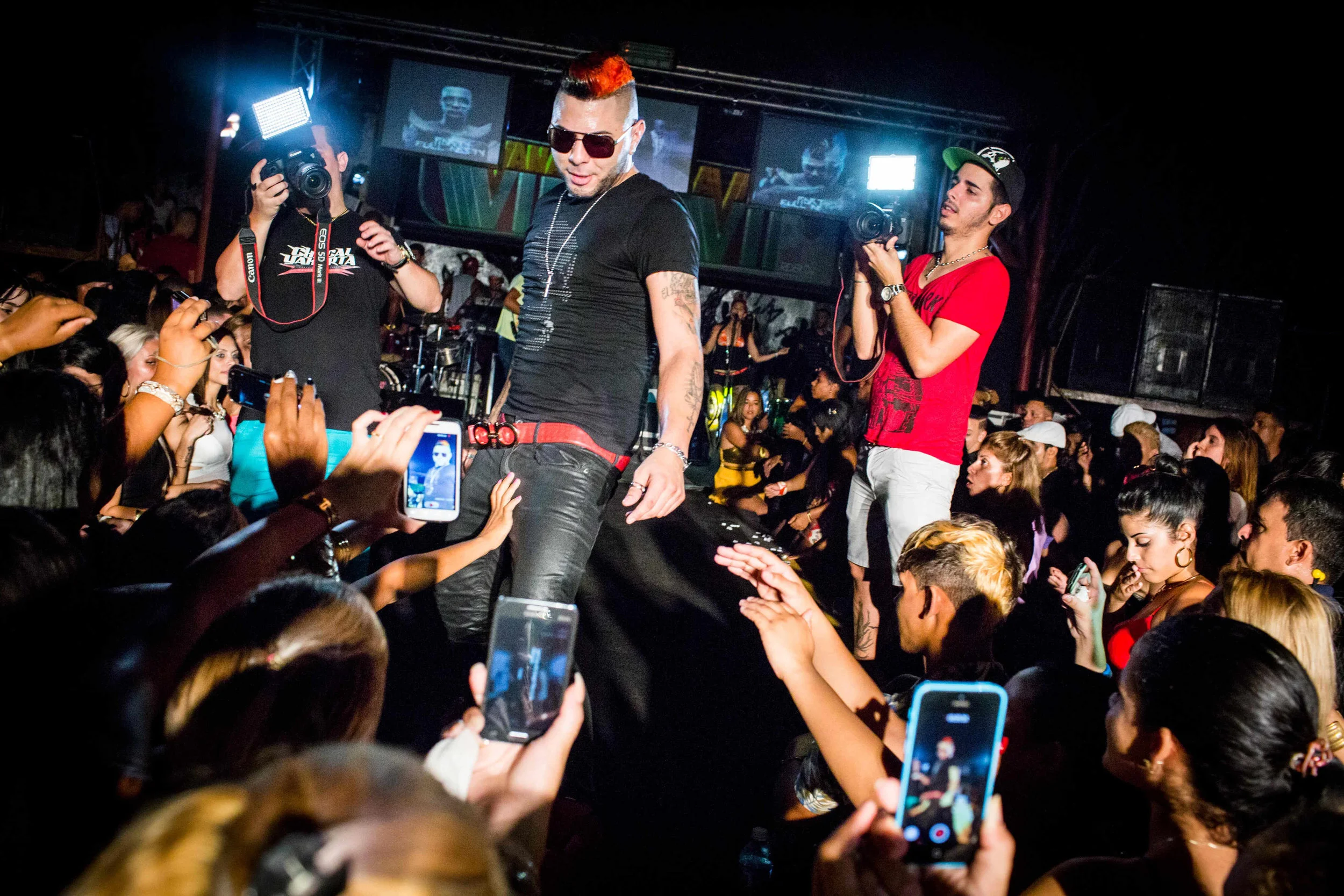The Rise of Reggaeton in Cuba
Cuban Reggaeton artist El Chacal - Photo by Lisette Poole
Reggaeton has always been a somewhat controversial and emotionally charged subject in Cuba. In 2010, the hit song “Chupi Chupi” was denounced by the then Minister of Culture, Abel Prieto, who stated frankly that it put “the soul of the nation in jeopardy.” In 2012, Orlando Vistel Columbié, President of the Cuban Institute of Music, denounced reggaeton as a genre dominated by males and that portrayed women as “grotesque sexual objects." Reggaeton was removed from official media channels, not allowed to record in state-run studios, and live performances were canceled. Officials are not the only ones who reject reggaeton. Many people in Cuban society look down on reggaeton’s obscene lyrics and lack of rhythmic sophistication, saying that the monotonous Denbow rhythm makes one song indistinguishable from the next.
The rejection of this music genre evokes memories of the past, with other acclaimed genres passing through similar phases of rejection. Consider the arrival of jazz, rock and roll, salsa, son, rumba, hip-hop, samba, and blues to their prospective cultural landscapes. Reggaeton, like many other genres, has its roots in low-income, marginalized, urban communities that are normally comprised of people of color. These genres were also rejected by governments, academics, and the upper classes for those same reasons. The critics cited their over-sexualized lyrics and lack of musical sophistication. Others feared the corruption of society’s youth by such immoral, devil music. At least in the case of jazz, it “featured the black American experience over conventional white sensibilities.”
Yet reggaeton remains popular as ever. Its power cannot be denied. Not just in Cuba, but across Latin America and especially in the Caribbean. Reggaeton was created in Panama from the adaptation of Spanish lyrics to Jamaican reggae and dancehall in the 1980s. The genre further evolved in Puerto Rico throughout the 1990s and arrived in Cuba in the early 2000s. Today, it is one of the most stable markets in the private economy due to the continuous supply and equal demand. In 2018, the Cuban reggaeton industry as a whole incurred over 1 million CUC.
Cuban Reggaeton artist El Yonki
It’s next to impossible to go about your day in Cuba without hearing a reggaeton song (even during a nation-wide quarantine lock-down). It is even changing the way that Cubans speak and dress. The lyrics of multiple songs have been incorporated into everyday slang, such as “hasta que se seque el malecón,” “bajanda,” “a coger la cola,” “suéltame la mía,” among others. In 2013, a popular haircut that was skin-short on the sides and long and straightened on top was named after El Yonki, a reggaeton artist notorious for his over-the-top hairstyles.
So what is it that makes reggaeton so popular and appealing to the masses? Reggaeton, as a music genre, is a direct reflection of the societies that produce it. Some say “it’s the expression of wishes, values, and the aspiration of important sectors of Cuban society in the 21st century.” The sheer popularity of reggaeton could be evidence enough of its value. La Moda, a reggaeton artist from the Cuban sub-genre called reparto, has commented that “there are times that it sounds vulgar in the lyrics and such because this is what we are experiencing everyday…We sing what we live in life, and that’s mainly how we get the people hooked."
A crowd of Cuban children dancing at a Reggaeton concert - Photo by Lisette Poole
The emergence of younger generations is another consideration. Every new generation rebels in some manner against the past. They energetically search for and create their own sound, their own identity. Who wants to listen to the music of their parents?! Perhaps reggaeton is here to stay. No matter how long it remains popular, it is definitely another chapter in the colossal, brilliant, and ever-evolving legacy of Cuban music.



